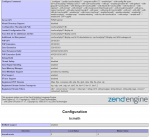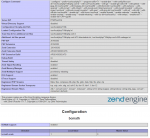This works:
Edit /usr/local/directadmin/data/templates/custom/php-fpm.conf and add this new line:
I addit it right above this line:
then create the directory ".opcache" at /home/USER/ and set file permission to 755
then I did this:
Then upload a phpinfo file in public_html for that user, visit it in browser and confirm it has correct path "on opcache.file_cache" value.
Hurray! Now I only need to automatie creation of /home/USER/.opcache directory upon user creation.
Edit: After adding a new user in DirectAdmin it is needed to manually reload php-fpm for file cache to work in the new user /home/newuser./opcache directory.
Edit /usr/local/directadmin/data/templates/custom/php-fpm.conf and add this new line:
Code:
php_admin_value[opcache.file_cache] = |HOME|/.opcacheI addit it right above this line:
Code:
|*if LIMIT_EXTENSIONS!=""|then create the directory ".opcache" at /home/USER/ and set file permission to 755
then I did this:
Code:
./build rewrite_confs
./build opcache
systemctl restart httpd.service
systemctl restart php-fpm70.serviceThen upload a phpinfo file in public_html for that user, visit it in browser and confirm it has correct path "on opcache.file_cache" value.
Hurray! Now I only need to automatie creation of /home/USER/.opcache directory upon user creation.
Edit: After adding a new user in DirectAdmin it is needed to manually reload php-fpm for file cache to work in the new user /home/newuser./opcache directory.
Last edited:

